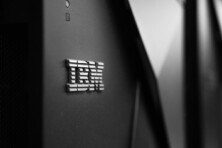Automated payment systems introduced by Clearing Houses in the 1970s-1980s eliminated a lot of manual work and facilitated cashless payments. Today, we’ll explore how it works in England

What is CHAPS payment? Source: pexels.com
CHAPS is a Clearing House Automated Payment System. It was originally established in London by the Bankers Clearing House in February 1984. This initial system worked only for in-town transactions. With the closure of the town clearing, the operating company was renamed to CHAPS Clearing Company Limited. Responsibility for the CHAPS system passed on to the Bank of England in November 2017.
CHAPS settles high-value mass payments as well as lower-value payments that need precise timing like buying vehicles or paying a deposit on a property. The transactions are domestic and conducted in pounds sterling. They are settled the same day, often instantly.
CHAPS is used by large financial institutions as it sets no limits regarding the transfer amount. There are 30 of the primary CHAPS members in the UK. In addition, over 5000 financial institutions originate CHAPS payments through a collaboration with one of the direct participants. Direct participants in CHAPS include the traditional commercial banks and a number of UK branches of international and custody banks.
Corporations and some of the largest businesses in the country also take advantage of the CHAPS system. They need to move great money amounts when they pay taxes or make time-sensitive payments to suppliers. Solicitors and conveyancers typically use CHAPS to complete housing and other property transactions.
How it works
The CHAPS system works from 6 a.m. to 6 p.m. on working days. Participants must submit their transaction information within that time frame. If direct participants initiate a transfer for a customer institution/business, they must do it before 5.40 p.m. or even earlier (each bank may set different time limits). In other cases, the transfer will be deposited the next day.
The transaction has a complex mechanism involving a few payment systems. That’s how it happens step-by-step:
- Customer requests to make a CHAPS payment
- CHAPS participant (sending PSP) creates and submits a payment via the SWIFT Messaging Network
- The networks directs CHAPS settlement request to the Real-Time Gross Settlement system (RTGS)
- RTGS processes the request
- RTGS sends a settlement confirmation to the sending PSP and the receiving PSP
- The receiving PSP gets necessary funds
- PSP credits customer’s account
Despite the high transaction volumes, customers can arrange a CHAPS payment both in-branch and online. Some banks also support telephone banking options. All the customers need is the receiver’s banking data such as the name, sort code and account number of the payee. In some cases, the name and address of their bank will also be used. With these details in mind, you can log in to your banking profile and make a request.
The banking institutions charge significant fees for such payments. You may pay £20-40 depending on the amount transferred and the institutions involved for a CHAPS payment. Therefore, this method is mainly used for transactions exceeding £10.000. For low-value money transfers, customers prefer a free payment method called Faster Payment. At the same time, there’s no minimum or maximum amount limits for CHAPS technically.
Is it popular?
Although UK-operating businesses prefer lower-cost BACS payments for daily routine transactions, things like purchasing property or vehicles, paying taxes, and other time-sensitive business payments require both speed and safety. Those are nicely combined in the CHAPS payment system.
CHAPS volumes were greatly affected by the Covid-19 pandemic. In 2020, volumes declined by 8.5% to 44.5 million; on average 175,346 per day. Nevertheless, the total value transmitted in CHAPS in the 12 months to December 2020 grew by 10.2% to a record £91.9 trillion; on average £361.8 billion daily.
In July 2021, CHAPS processed 3.9 million payments worth £7.1 trillion over 22 settlement processing days.
Due to the increased number of participants and daily transactions, the CHAPS system is undergoing some improvements. Its regulator – Bank of England – is aiming to adopt the ISO 20022 messaging standard for CHAPS payments in June 2022. Enhanced data changes will start from February 2023; and a new core ledger will be added in September 2023. The renewed RTGS service will have a simpler and more proportionate joining process than it has now. Hence, after the transformation, it would be easier to onboard new CHAPS participants.
SEE ALSO:









